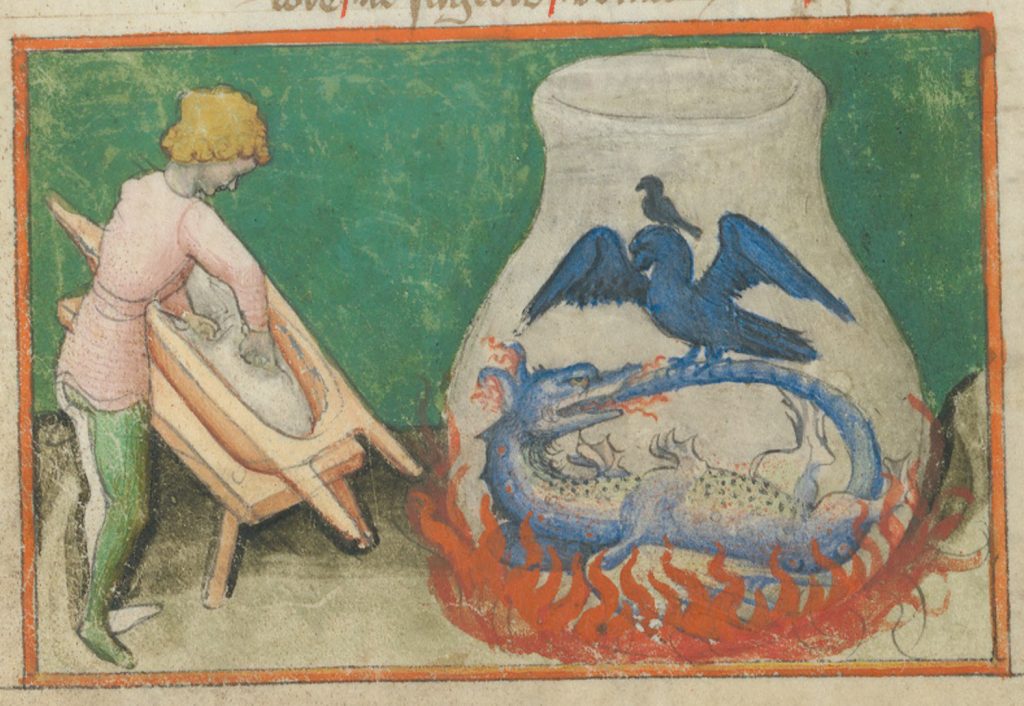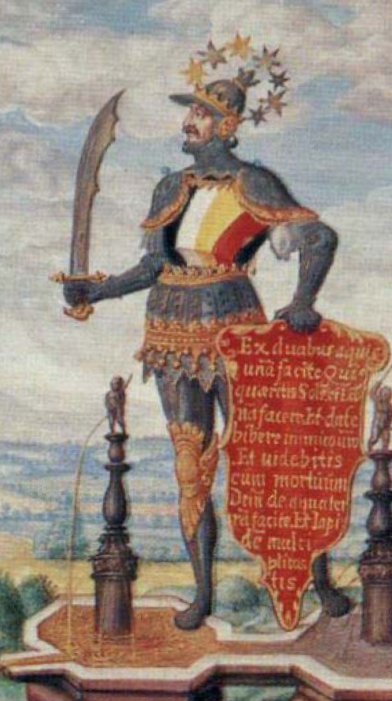Alchemy is the sacred science through which we transmute heavy metals into gold or silver, i.e. into precious objects. More than a Jungian metaphor, alchemy is an ancient science that originates from Ancient Egypt. But its name is related to the “Black Land” or “Khemet”, the archaic name of the country on the Nile. The arab word al-kīmiyā is related to Khemet as well as the greek word χυμεία, khumeía.
One of the highest goals of the alchemists was chrysopoeia, i.e. the transmutation of metals considered base into noble metals. Lead is one of the basic metals that is a symbol for the shadow, that is, for our dark side.
Gold represents our solar, radiant consciousness, the man who developed the body of light. The sun, which is the planetary representative of gold and the Self, is drawn in the form of a circle. The circle is also the symbol with which we imagine God. The circle has no beginning and no end.

The existing images in these manuscripts describe initiation paths into esoteric systems that are difficult to penetrate, completely indecipherable to an uninitiated eye.
The term “Magnum Opus” in alchemy refers to the Great Work or the process of creating the philosopher’s stone, a legendary substance that alchemists believed had the power to transmute lead into gold and grant immortality. The Magnum Opus is often symbolically represented in various stages, and these stages can vary among different alchemical traditions. Here is a general outline of the stages:
- Calcination: This is the first stage and involves the heating of a substance to a high temperature in order to remove impurities. In symbolic terms, it represents the destruction and breaking down of the initial material.
- Dissolution: After calcination, the next step is dissolution. This involves dissolving the purified material in a solvent. Symbolically, this stage represents the breaking down of the ego or the individual identity.
- Separation: This stage involves separating the components that were dissolved in the previous step. It is a process of purification and refinement, separating the impurities from the desired essence.
- Conjunction: Also known as the “joining” or “marriage,” this stage involves bringing together the purified elements from the separation phase. This symbolic union represents the integration of opposites.
- Fermentation: In alchemical terms, fermentation is a process of ripening and maturation. It is often associated with the development of new life or the emergence of the philosopher’s stone.
- Distillation: This stage involves heating the fermented material to separate and purify the components based on their different boiling points. It is a process of further refinement.
- Coagulation: The final stage, coagulation, is the solidification or crystallization of the purified and refined material. It represents the culmination of the Great Work, resulting in the attainment of the philosopher’s stone.
The Four Stages Model in alchemy is another representation of the alchemical process, simplifying the Magnum Opus into four main phases. This model is often associated with the work of the Swiss psychoanalyst Carl Jung, who integrated alchemical symbolism into his psychological theories. The four stages are:
- Nigredo/Melanosis (Blackness): This stage is associated with the initial darkness and decomposition. It represents the confrontation with the shadow aspect of the self, acknowledging and working through the darker, unconscious elements.
- Albedo/Leucosis (Whiteness): Following the Nigredo, the albedo is a stage of purification and illumination. It involves the washing and cleansing of the material, both physically and metaphorically. Psychologically, this stage is related to gaining clarity and insight.
- Citrinitas/Xanthosis (Yellowness): The Citrinitas stage represents a yellowing or golden hue and is associated with spiritual awakening and the integration of opposites. It involves a harmonizing of the conflicting elements and the emergence of a new awareness.
- Rubedo/Iosis (Redness): The final stage, Rubedo, is often associated with the color red and signifies the culmination of the alchemical process. It represents the union of opposites, the attainment of enlightenment, and the completion of the Magnum Opus.

These stages are not only seen as physical transformations of substances in the alchemical laboratory but also as symbolic representations of psychological and spiritual development. Jung saw the alchemical process as a metaphor for the individuation process, where an individual becomes more self-aware and integrated.

2024 © All Rights Reserved ∙ sealofpower.com ∙ Adrian B. Constantine is a polarity mentor, author, creator of qibbala tarot, hermetic constellations, kinetic alchemy & magical passes guide | 17k+ souls guided | 15+ years expertize in Taoism, Yoga & Qabbala